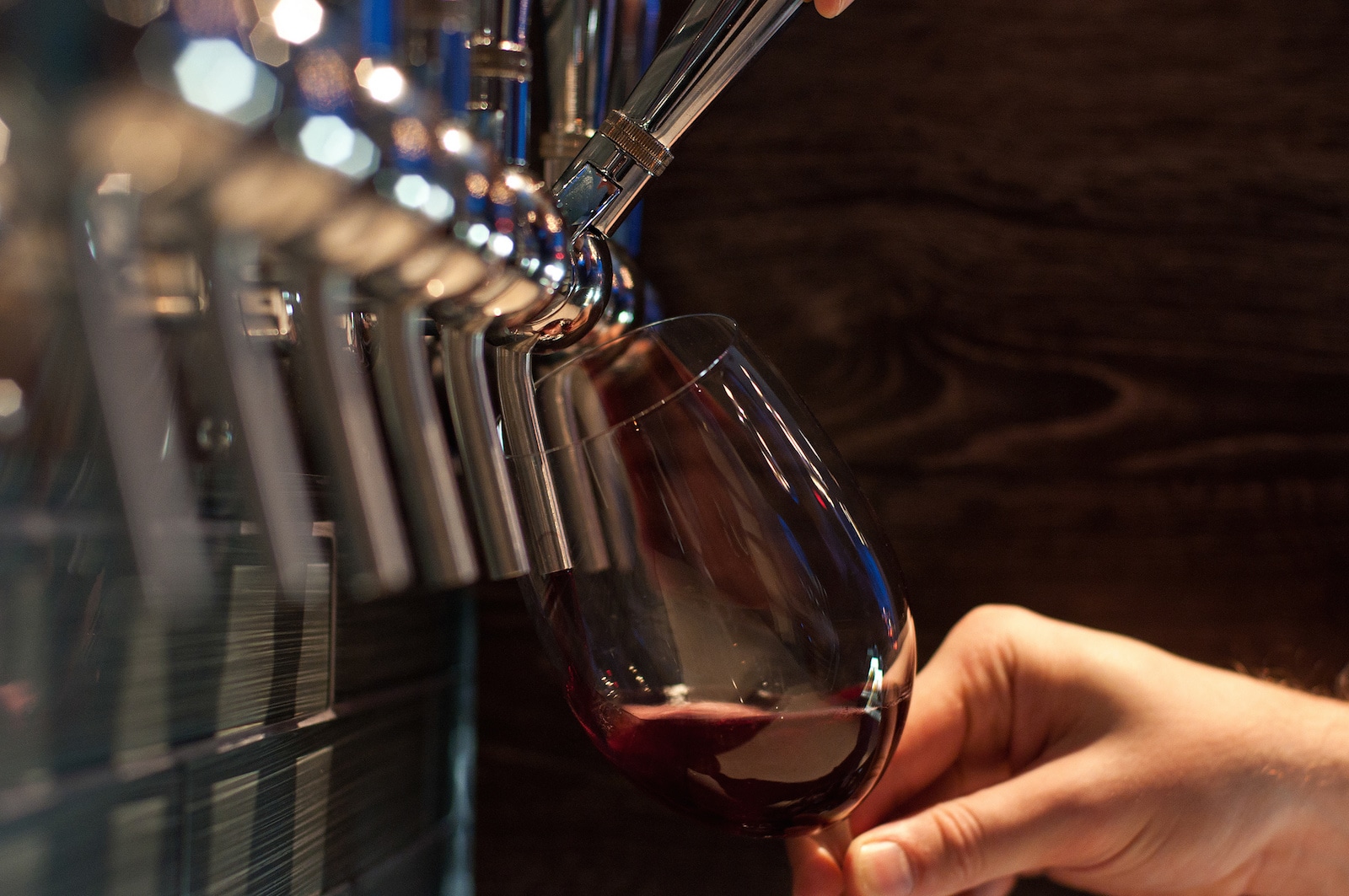
From detergent to dog cookies, it can be challenging to make decisions that take your beliefs and tastes into account while trying to be conscientious about the impact of your purchases on the earth.
It’s much easier when someone else does the research for you.
In that spirit, Epicure & Culture is sharing five green wine alternatives to bottled vino that you might consider pairing with your dinner going forward.
Wine On Tap
Perhaps the best alternative, environmentally speaking.
As the name implies, instead of individual bottles or other vehicles (see below), wine is delivered to bars and restaurants in kegs that hold the equivalent of around 25 bottles.
The kegs are reusable, and they eliminate all of the glass, corks, boxes and other packaging inherent in bottling and shipping wine.
Because the kegs are airtight the wine stays fresh for months, so restaurants can continue to pour by the glass until the entire keg has been enjoyed, further reducing waste.
And if you want more than a glass?
Your wine can be delivered to your table in a reusable carafe instead of a one-use bottle.
Many producers of excellent wine, including the likes of Miner and Bonny Doon, are driving the trend toward wines on tap, so you don’t have to sacrifice deliciousness when tasting.

Tetra Packs
Think of how fruit juice is often packaged in thin pouches and you get the idea behind Tetra Packs for wine.
The main advantage to Tetra Packs is that they are incredibly strong, so that most of the weight of that package is the wine itself; about 95% versus just 5% for the packaging.
This greatly reduces the environmental impact of shipping as more wine can be moved in a single shipment. Tetra Packs are also recyclable, lessening their impact on the environment.
Boxed Wine
Boxed wines are becoming increasingly popular for a variety of reasons.
A box typically holds 3 liters, or the equivalent of 4 standard wine bottles. The wine is held in an airtight pouch, which preserves freshness, and allows the wine to last for weeks.
Like tetra packs, the weight ratio of boxed wine is far superior to bottles, thus reducing the impact of shipping on the environment. The box itself is typically recyclable as well.
Boxed wine producers generally focus on the value-conscious consumer, but that doesn’t mean there aren’t a number of excellent choices to be found.
Last year Wine Enthusiast offered up a list of their top 26 box wines, including Bandit, Black Box and Bota Box.
Single-Serving Cans
This one is a bit trickier. It may seem counter-intuitive at first, but drinking wine in single-serving cans instead of out of traditional bottles can still reduce the impact on the environment.
The main advantage is that the production and recycling of glass bottles has been deemed the single most significant source of wine’s impact on the environment.
In contrast, aluminum is extremely lightweight and highly recyclable, and can go from your recycling bin to the store shelf in as little as 60 days.
While the initial environmental cost of aluminum is high (as it is mined), it is infinitely recyclable, and the Aluminum Association points out that nearly 75% of all aluminum produced in the United States over the last 100 years is still in use.
Drink Local
There are many factors involved in the wine production and delivery process that have an impact on the environment, from the types and amounts of fertilizers used to how much of the production is aided by machinery (think diesel fuel) versus by hand.
All things being equal, a local wine will have a smaller impact on the environment than one that has to be shipped from great distances.
Here in the United States, the “big three” of California, Oregon, and Washington produce the bulk of the country’s wine, but that doesn’t mean you have to buy a wine produced in one of those states (although go ahead — so many are delicious!).
There is at least one winery in every state, and you might be surprised at how many great wines come from regions not typically thought of as wine country.
Amazing wines are produced in Colorado, Idaho, New York, Virginia, and North Carolina, just to pick a few.
In fact, one of my favorite collections of sparkling wines comes from the Gruet Winery out of New Mexico. So don’t be shy in finding wines that are produced right around the corner from you, wherever you may call home.
Have you tried any of the above green wine options?
Latest posts by Gretchen Healey (see all)
- Authentic Tanzanian Recipes From An African Safari Chef - May 1, 2017
- Wellness Travel: Top 10 Yoga Fusion Retreats - Dec 29, 2016
- Candy With Conscience: How To Have An Ethical Halloween - Oct 25, 2016
- The Incredible Story Of Kenya’s Rhino Guardians - May 10, 2016
- Explore Africa: How One Small Business Is Shunning Stigma & Empowering Disabled Locals In Tanzania - Oct 27, 2015




